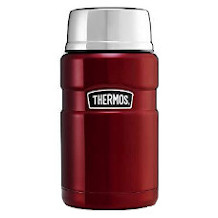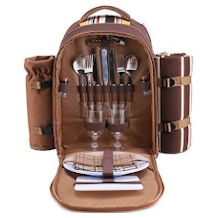All-terrain wagon purchasing advice: how to choose the right product
- What you need to know
- An all-terrain wagon is made of either wood, fabric, or metal.
- A foldable all-terrain wagon is particularly easy and uncomplicated to store.
- For trips over uneven terrain, an all-terrain wagon with pneumatic tires is recommended, as they have particularly good suspension.
- The wagon should have a load capacity of at least 110 lb (50 kg).
- With a height-adjustable handle, the all-terrain wagon can be pulled comfortably by people of different heights.
Practical companions for shopping
If you want to go on a picnic, a shopping tour, or an excursion with your children, you often have a lot to transport. Blankets, toys, drinks, and provisions can usually fit in the trunk without any problems, but as soon as it’s time to go outside, transport becomes a little more complicated. On a short trip, the luggage may still fit into bags or backpacks, but on longer trips with several people, carrying it quickly becomes exhausting. An all-terrain wagon is therefore a good choice for relaxed trips.
An all-terrain wagon is equipped with four tires and usually has a steerable front axle. It is usually pulled, but there are also models that can be pushed. Since there is enough space on the loading area for all kinds of luggage, an all-terrain wagon can be used for picnics, shopping, or gardening. It is also suitable for trips to the beach or barbecues. Users benefit from an all-terrain wagon especially on unpaved roads. A robust model can even accommodate children, so that the wagon can be used as an alternative to a stroller. However, children should be at least 12 months old; some manufacturers recommend a minimum age of 18 months.
The different types
Depending on the purpose for which the all-terrain wagon is needed, a different model makes sense. The types of wagon differ mainly in terms of material, weight, and possible uses.
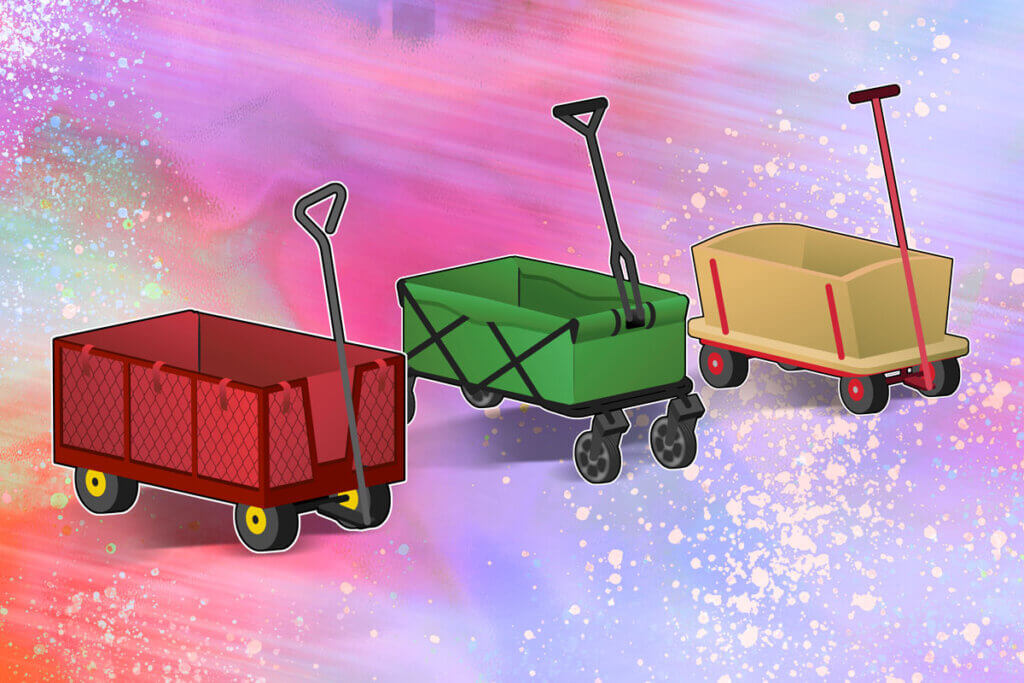
The classic all-terrain wagon
The most familiar type of all-terrain wagon consists of a tubular steel frame with wooden side walls. The tires are usually pneumatic. This type of cart is very popular because of its stability and durability. It can usually carry between 220 and 330 lbs (100 and 150 kg) of weight and is therefore equally suitable for transporting luggage and children. Due to its construction, however, such a handcart cannot be disassembled; in addition, it has a high empty weight. It is therefore hardly possible to transport the wagon in a small car, for example to get to the starting point of the excursion.
The foldable all-terrain wagon
A foldable all-terrain wagon has a frame made of metal and walls made of fabric, which is why it is considerably lighter than a classic all-terrain wagon. The tires are either wide rubber or narrow hard plastic versions. The biggest advantage is the transportability of the folding wagon. It is easy to fold up, doesn’t take up much storage space and can be carried easily due to its light weight. However, the material of the wagon is less durable. In addition, a folding wagon has a lower load limit than a classic all-terrain wagon. Such a wagon is ideal for transporting luggage and other light objects. Children can also be transported in it, depending on their weight.
The garden cart
The most robust form is the garden cart, also known as a nursery wagon. It is made entirely of metal and has sturdy pneumatic tires. It can also be used to transport heavy objects, as its load-bearing capacity is 550 lb (250 kg). Thanks to its flexible front axle, the cart can be easily manoeuvred through difficult terrain, even with a heavy load. A garden card is rather unsuitable for transporting children, as the risk of injury is very high. However, it is ideal for transporting heavy equipment or objects. Bear in mind that if you want to transport the cart from one place to another, you might have difficulties because of its bulkiness and dead weight.
What to look for when purchasing
When you purchase an all-terrain wagon, not only the type is important. Its tires, load capacity, handling, and size are also important.
Tire material
When it comes to the tires of their wagons, purchasers choose between models with plastic, hard rubber, and pneumatic tires. The decision depends on the intended use of the wagon. Inexpensive all-terrain wagons usually have plastic tires. Although they are quite robust, they are not suitable for travelling on uneven terrain because they do not have any suspension and can be extremely loud. They are also more difficult to steer than other types of tires.
Hard rubber tires are very light and are particularly suitable for touring on paved roads. They can withstand high loads but are difficult to manoeuvre on uneven terrain. They do, however, absorb shocks well. All-terrain wagons with hard rubber tires are usually cheaper than models with pneumatic tires.
If you prefer to use your wagon on unpaved terrain, for example on uneven hiking trails, you should choose a model with pneumatic tires. They absorb shocks and jerky movements and are therefore particularly suitable for transporting children. However, pneumatic tires need to be patched and replaced more often because they are more susceptible to damage.
Tire width
The wider the tires, the easier it is to pull an all-terrain wagon. Narrow tires are very manoeuvrable and perfectly adequate for asphalt roads. However, as they quickly get stuck, they are not suitable for uneven terrain. Here, wide tires with ball bearings are advantageous because they absorb vibrations and thus ensure a smoother ride.
Load capacity
The load limit of the wagon determines how much weight it can carry. It is usually between 110 and 440 lb (50 and 200 kg), depending on the type of cart you choose. Depending on the number of children, a load capacity of 110 lb (50 kg) is usually sufficient for transporting them. If you want to use a wagon to transport shopping, drinks, or picnic accessories, you are better off with a model that can carry 220 to 330 lb (100 to 150 kg). For heavy goods such as sand, stones, or garden accessories, the wagon should be able to withstand a weight of at least 440 lb (200 kg). Some models even have very high load limits of up to 1,100 lb (500 kg). This means that particularly heavy items, such as garden tools, can be transported without any problems.
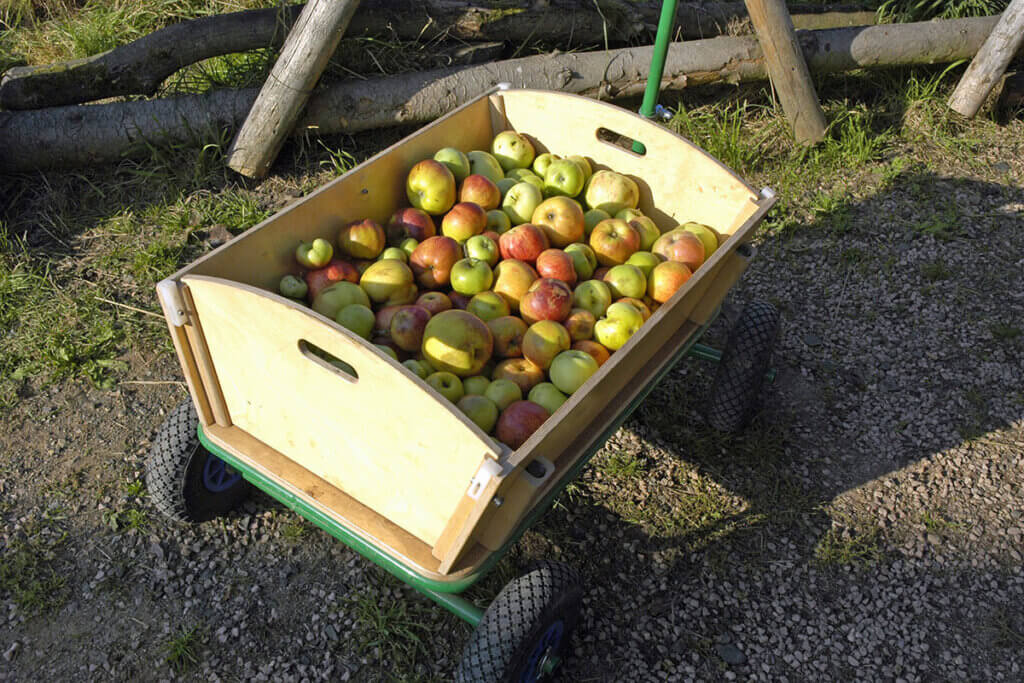
Handling
To ensure that the handcart doesn’t cause any problems, it should be easy to handle. To make it easy to manoeuvre, it should have a movable axle and drawbar.
Brake
Some all-terrain wagons have one or more parking brakes. This prevents the cart from rolling away when it is parked on uneven surfaces or slopes. A parking brake is a must, especially if children are transported in the wagon. If necessary, it can also be purchased later and mounted on the wagon. Depending on the type of parking brake, it can cost between $15 and $50.
Handle
Since the wagon is pulled by the handle, it should be particularly robust and non-slip. The handle is either made of plastic or padded foam rubber, the choice of material is a matter of preference. It should lie well in the hand and be comfortable to grip even on longer tours.
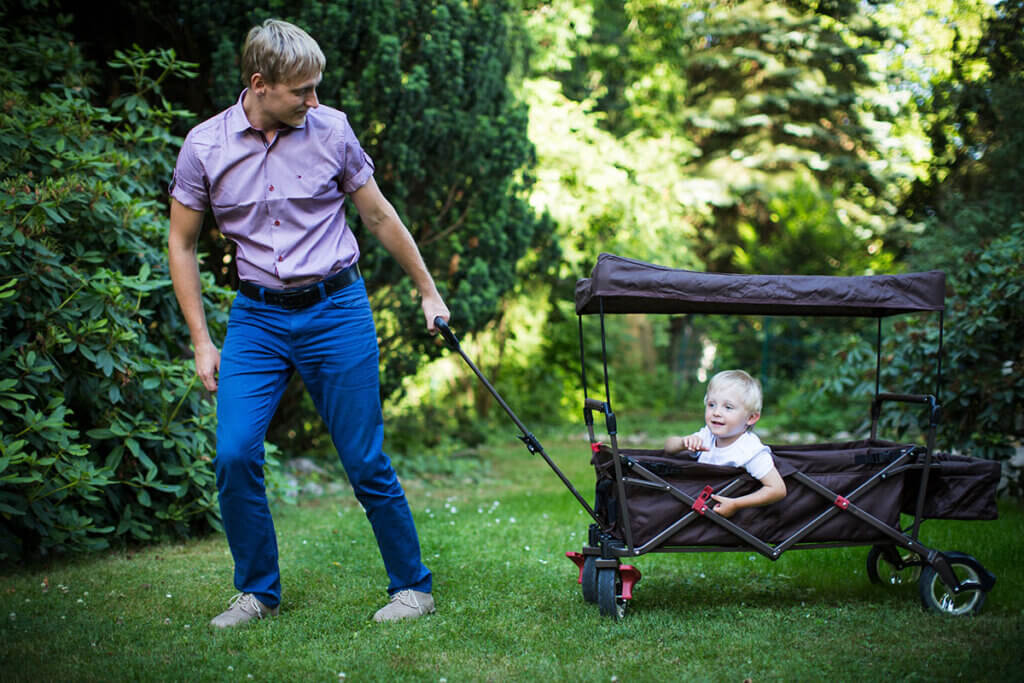
Ideally, the handle is height-adjustable so that people of different heights can pull it. Some all-terrain wagons have a handlebar that locks when released and thus doesn’t fall to the ground. This is practical because the user doesn’t have to bend down to pick up the handle. Sometimes the handle can also be attached to the front of the wagon. Some models even have a push bar with which they can be pushed in a similar way to strollers.
Size
Many all-terrain wagons are about 30 to 40 inches (80 to 100 cm) long and about 16 to 20 inches (40 to 50 cm) wide. How high the wagon is depends on what it is made of and whether it has a roof. If there is little space available for storage, you should opt for a smaller wagon or a foldable model.
Empty weight
A all-terrain wagon is usually heavily loaded. To ensure that it can still be transported easily, its empty weight shouldn’t be too high. However, a high empty weight also makes the wagon more stable, which is why it is a question of weighing things up. Folding wagons are particularly light: they weigh about 29 to 40 lb (13 to 18 kg) because they are mostly made of fabric. Garden carts, on the other hand, are very heavy. They weigh up to 66 lb (30 kg), which means a lot of extra weight to pull. If the cart is also to be pulled by children, a lightweight model with a maximum empty weight of 30 lb (14 kg) is recommended.
Price
Most models cost between $50 and $200. Those who want an all-terrain wagon with a roof usually pay at least $100 for it, while simple wagons without accessories are available for $50. For users who only need the wagon once or rarely and don’t have a place to park it, there are models for rent.
Additional features
Although a simple all-terrain wagon is sufficient for many trips, there are a number of accessories that are quite useful. One of the most popular additional features is a sun and rain canopy. Especially when transporting children, such protection is advantageous. However, the canopy should not hang too low. With many models it is already included in the scope of delivery, with others it can be purchased later. In summer, mosquito nets can also be practical to protect children or food from insects.
External pockets are also useful for storage space, as additional luggage can be stowed in them. If children are transported in a wagon, there is hardly any space left. Cooler bags for drinks or drink holders can also be included in the scope of delivery of the wagon.
Some all-terrain wagons are equipped with seat belts that can be used to secure children or luggage in the vehicle. For winter, there are snow runners that make the wagon safer on ice and snow. Tours in the dark can be better managed with a wagon with lighting. For this reason, LEDs are standard equipment on many models.
Cleaning the all-terrain wagon
All-terrain wagons are usually very easy to clean. However, since they are typically used in all kinds of weather, they quickly become dirty and need to be cleaned. Moisture in particular can damage the materials of the wagon in the long term. Dirt such as sand or soil can be removed with a hand brush. To do this, lay the wagon on its side and sweep the inside thoroughly.
Even stubborn dirt is no problem. The fabric of foldable all-terrain wagons can usually be removed and cleaned in the washing machine. If this is not the case, the dirt can be removed with soapy water and a fresh cloth. If the wagon is made of wood or metal, its surface can simply be cleaned with a wet cloth. If the tires squeal, spread some oil on them to get rid of the noise. The tires and handlebars can be cleaned with a garden hose.
Storage options
Basically, you can store your wagon indoors or outdoors. However, keep in mind that the cart is exposed to the weather outside, which can affect its durability. All parts made of steel and aluminium should be sprayed with a protective coating so that they don’t rust so quickly. For folding models, a removable fabric is advantageous as it will not mould. Ideally, you should cover the wagon with a tarpaulin after use to protect it from the weather. Folding all-terrain wagons take up less space when stored, but have to be disassembled first.
Image 1: © FinalCheck | Image 2: © lotharnahler / stock.adobe.com | Image 3: © Kristin Gründler / stock.adobe.com

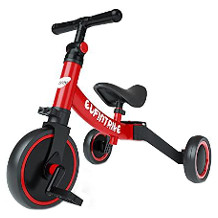
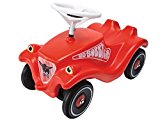
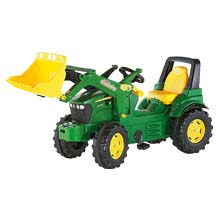
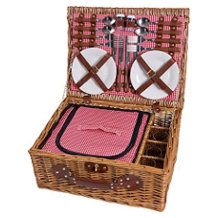
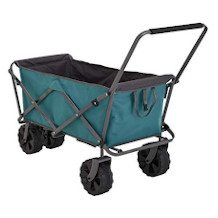
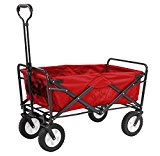







 2,095 reviews
2,095 reviews

